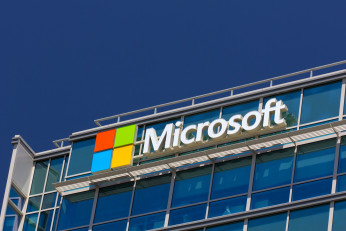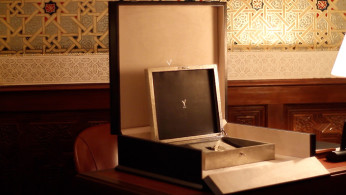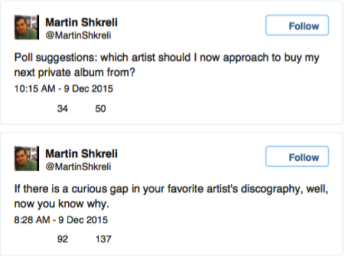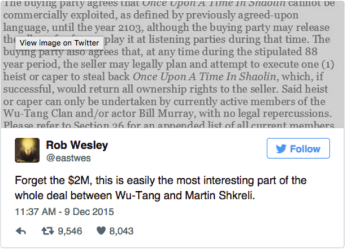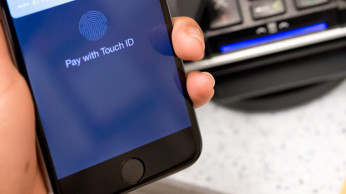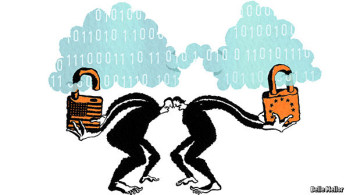
By: Ryan Suit,
The United States is approaching a crossroads when it comes to electricity: should we continue with our old grid system that is functional but far from ideal, or reinvest in a new means of generating and transmitting electricity? If we choose the latter, one promising solution is to invest in the construction of microgrids. Microgrids are essentially much smaller versions of the national power grid, but instead of supplying energy to the whole country, microgrids serve towns, neighborhoods, city blocks, or other localized areas.[1]
The Grid
In order to understand the potential benefits of microgrids, one must first know about how the grid in the Unites States currently works. The grid is divided into three parts: the East, the West, and Texas. These sections are connected, but mainly run independent of each other. The power grid consists of three segments of producing and delivering electricity: generation, transmission, and distribution. Electricity is generated at power plants. It is then transmitted across miles, or hundreds-of-miles, of electric transmission lines before reaching a distribution point so that it can be delivered to consumers. Essentially, the grid is a massive web of interconnected transmission lines that get energy pumped into them before the electricity eventually makes its way to homes and into electronics.
The grid must always balance the amount of electricity being supplied with the amount being demanded.[2] If the amount of electricity being supplied does not match the amount being demanded, the grid will crash.[3] This means that there is a constant need for electricity to be generated. The minimum amount of electricity that is always generated is known as the “base load”. As demand for electricity increases, due to higher or lower use during different times of the day or of the year, then more electricity is generated as needed.[4]
The grid was never planned, but rather grew to meet demand as demand increased. There are numerous issues facing the grid today. For one, the grid is relatively inefficient. Power plants from all over the country are generating electricity that, because of the web of transmission lines, may be used by a consumer several states away.[5] On average, there is a 6% loss of the electricity generated simply because it has to be transmitted so far to consumers.[6] Another problem facing the grid is its vulnerability to cyber and terror attacks because of how extended and sprawling it is. Further, the grid is not always reliable because of severe weather and global warming.[7] “Weather events are the number one cause of power outages. Increasing temperatures, decreasing water availability, increasing storms, flooding, rising sea level…and increasing intensity of storm events increases risks to electric transmission and distribution lines.”[8] One of the largest issues the grid must deal with is the amount of carbon dioxide produced by power plants that use coal and natural gas.[9] Already, 87% of the electricity consumed in the United States comes from fossil fuels.[10] Carbon dioxide emissions will only get worse with our current grid because electricity demand is expected to increase substantially by 2050.[11] Clearly, the national power grid is not an ideal way to generate electricity.
Microgrids
A microgrid is a miniature power grid that produces electricity for a localized area.[12] Microgrids can work on or off of the main power grid.[13] There are numerous benefits to building and using microgrids: they are more efficient, they improve reliability of electricity, they can save money, they are less vulnerable to cyber and terror attacks, and they can incorporate more renewable energy.
Microgrids are more efficient because the power used by the consumers on the microgrid is generated locally.[14] Rather than using electricity from several states away, the electricity can be generated across town, or even next door.[15] Microgrids enable the use of “distributed generation”, which is when neighbors rely on each other for electricity.[16] When neighbor A is generating a surplus of power from the solar panels on her house, she can only sell it back to the utility company in our current grid scheme. On a microgrid, however, that extra energy could be sold to neighbor B or neighbor C, depending on which neighbor needed more electricity at the time.[17] There is technology that acts as the central control over a microgrid, and can automatically divert electricity on a microgrid to where it is needed.[18]
Because microgrids generate electricity locally, they also can improve the reliability of electricity.[19] Local power does not need to travel across states, so there would be less loss of electricity due to less transmission. Additionally, severe weather would cause less problems.[20] In 2008 and 2009, a small town in New York suffered multiple power outages due to ice storms knocking down power lines and disconnecting the 5,000 residents from the grid.[21] Without the transmission lines, the town was isolated from the grid, and thus cut off from any electricity.[22] The town has since invested in a microgrid with renewable energy so that they can generate their own power and not be reliant upon the national grid.[23]
Another added benefit to microgrids is that they are less susceptible to cyberattacks.[24] The national power grid is so large and expansive that cyberattacks are a legitimate threat.[25] Microgrids, on the other hand, are localized and can be more easily protected. Plus, if an attack were to happen in a different state, energy customers far away would be safe. That is not necessarily the case with the national grid.
Microgrids can also save money.[26] Because there are fewer customers on a microgrid, there is less electricity demand. Additionally, it is easier to track the energy use of fewer customers. Combining those two, microgrids are able to know how much electricity generate to match demand, rather than generating a constant amount that may not all be used. As such, there is less electricity generated, meaning there is also less electricity wasted. Both of those decrease generation costs and save money for everyone on the microgrid.[27]
The most environmentally-friendly perk of microgrids is that they are more able to incorporate renewable energies.[28] Since there are less customers, the variable electricity provided by wind or solar power causes less problems for a microgrid.[29] For one, less demand for electricity means that renewables may be able to produce enough to provide enough power for all consumers on a microgrid.[30] Second, less demand on a microgrid makes batteries and fuel cells more viable.[31] Currently, renewable energy sources like wind and solar are not easily incorporated into the grid because they do not constantly generate power, meaning that they are not the best sources of energy to balance the supply and demand of electricity. In addition, even the largest batteries are too small to store electricity from renewables on a national scale. Microgrids do not have to deal with this problem. Microgrids are small enough that batteries and fuel cells can store energy for when solar or wind power is not available, which makes microgrids and alternative energy projects much more feasible.
The Law Surrounding Microgrids
Though the benefits of microgrids are numerous and apparent, current energy laws make it difficult for microgrids to be built. Currently, there are few laws that directly regulate microgrids.[32] However, the current legal scheme makes it difficult, if not impossible, for microgrids to be built with any kind of economic viability.[33]
Federal support for microgrids has been growing. Following the destruction and massive power outages caused by Hurricane Sandy in 2012, the Federal government began looking more into microgrids.[34] The “Hurricane Sandy Rebuilding Task Force (Task Force) proposals, which were federally supported proposals to encourage microgrids in New York, are perhaps the most direct source of microgrid support at the federal level.”[35] The majority of state laws do not speak directly to microgrids, either, and actually serve as a barrier to their development.[36] According to Sara Bronin,
“By far the biggest barrier to the creation of microgrids is contradictory, unclear, or hostile law. State legislatures and state public utility commissions have made it difficult to determine whether a microgrid project can be built. One critical question is whether a microgrid should be considered a public utility. State laws often define “public utility” to include any person or entity furnishing power to another, without regard to the number of recipients of such power and without exceptions for alternative energy or microgrids. Such broad definitions would subject even a microgrid with two users to burdensome regulation, because public utilities must abide by very strict rules that determine allowable technologies, tariffs, technical requirements, and other parameters. No state laws squarely address microgrids, and no comprehensive, publicly-available analysis of possible means to allow microgrids within current state law appears to exist.”[37]
Similar to state laws, local laws do not readily facilitate microgrid development, specifically with renewable energies.[38] Zoning ordinances, aesthetic controls, and historic preservation rules often stand in the way of alternative energy projects that could be used to supply power to microgrids.[39] Overall, the entire legal regime that regulates or would effect microgrids prohibits their development.
Conclusion
Microgrids hold an enormous amount of potential for the future of the electric power grid in the United States. Though the technology to develop an efficient, reliable, more-environmentally-friendly system of microgrids is at our fingertips, the laws are simply not where they need to be for this to happen. Momentum is growing for microgrids, but only time will tell how much is actually invested into solving the United States’ grid issues.
[1] Oak Ridge National Laboratory, Your own energy ‘island’? Microgrid could tandardize small, self-sustaining electric grids, ScienceDaily, (Nov. 5, 2014), http://www.sciencedaily.com/releases/2014/11/141105101100.htm.
[2] Federal Energy regulatory Commission v. Electric Power Supply Association et al., 577 U.S. ___ (2016).
[3] Federal Energy regulatory Commission v. Electric Power Supply Association et al., 577 U.S. ___ (2016).
[4] Federal Energy regulatory Commission v. Electric Power Supply Association et al., 577 U.S. ___ (2016).
[5] Andrew Landrum, El Nino and the Case for Microgrids, American Security Project, (Oct. 8, 2015), http://www.americansecurityproject.org/el-nino-and-the-case-for-microgrids/.
[6] Andrew Landrum, El Nino and the Case for Microgrids, American Security Project, (Oct. 8, 2015), http://www.americansecurityproject.org/el-nino-and-the-case-for-microgrids/.
[7] Kevin Jones, et al.,The Urban Microgrid: Smart Legal and Regulatory Policies to Support Electric Grid Resiliency and Climate Mitigation, Fordham Urban L.J. (2014 – available on Lexis/Westlaw).
[8] Kevin Jones, et al.,The Urban Microgrid: Smart Legal and Regulatory Policies to Support Electric Grid Resiliency and Climate Mitigation, Fordham Urban L.J. (2014 – available on Lexis/Westlaw).
[9] Kevin Jones, et al.,The Urban Microgrid: Smart Legal and Regulatory Policies to Support Electric Grid Resiliency and Climate Mitigation, Fordham Urban L.J. (2014 – available on Lexis/Westlaw).
[10] Kevin Jones, et al.,The Urban Microgrid: Smart Legal and Regulatory Policies to Support Electric Grid Resiliency and Climate Mitigation, Fordham Urban L.J. (2014 – available on Lexis/Westlaw).
[11] Historic and projected U.S. electricity demand, 1950-2050, http://www.rmi.org/RFGraph-US_electricity_demand (last visited Feb. 22, 2016).
[12] Oak Ridge National Laboratory, Your own energy ‘island’? Microgrid could tandardize small, self-sustaining electric grids, ScienceDaily, (Nov. 5, 2014), http://www.sciencedaily.com/releases/2014/11/141105101100.htm.
[13] Andrew Landrum, El Nino and the Case for Microgrids, American Security Project, (Oct. 8, 2015), http://www.americansecurityproject.org/el-nino-and-the-case-for-microgrids/.
[14] Alison Lantero, How Microgrids Work, Energy.gov, (June 17, 2014, 10:27 AM), http://energy.gov/articles/how-microgrids-work.
[15] Sara Bronin, Curbing Energy Sprawl with Microgrids, 43 Conn. L. Rev. 547, (2010).
[16] Sara Bronin, Curbing Energy Sprawl with Microgrids, 43 Conn. L. Rev. 547, (2010).
[17] Sara Bronin, Curbing Energy Sprawl with Microgrids, 43 Conn. L. Rev. 547, (2010).
[18] Sara Bronin, Curbing Energy Sprawl with Microgrids, 43 Conn. L. Rev. 547, (2010).
[19] Julia Hesse and Sally Jacquemin, Microgrids in the American power network, Phys.org, (Feb. 8, 2016), http://phys.org/news/2016-02-microgrids-american-power-network.html.
[20] Kevin Jones, et al.,The Urban Microgrid: Smart Legal and Regulatory Policies to Support Electric Grid Resiliency and Climate Mitigation, Fordham Urban L.J. (2014 – available on Lexis/Westlaw).
[21] George Walsh, Power outages lead towns to look at microgrids, Associated Press, (Feb. 8, 2016, 10:00 PM), http://www.postregister.com/articles/featured-business/2016/02/08/power-outages-lead-towns-look-microgrids.
[22] George Walsh, Power outages lead towns to look at microgrids, Associated Press, (Feb. 8, 2016, 10:00 PM), http://www.postregister.com/articles/featured-business/2016/02/08/power-outages-lead-towns-look-microgrids.
[23] George Walsh, Power outages lead towns to look at microgrids, Associated Press, (Feb. 8, 2016, 10:00 PM), http://www.postregister.com/articles/featured-business/2016/02/08/power-outages-lead-towns-look-microgrids.
[24] Andrew Landrum, El Nino and the Case for Microgrids, American Security Project, (Oct. 8, 2015), http://www.americansecurityproject.org/el-nino-and-the-case-for-microgrids/.
[25] Andrew Landrum, El Nino and the Case for Microgrids, American Security Project, (Oct. 8, 2015), http://www.americansecurityproject.org/el-nino-and-the-case-for-microgrids/.
[26] George Walsh, Power outages lead towns to look at microgrids, Associated Press, (Feb. 8, 2016, 10:00 PM), http://www.postregister.com/articles/featured-business/2016/02/08/power-outages-lead-towns-look-microgrids.
[27] Ken Silverstein, With a Focus Increasing Reliability and Decreasing Emissions, Microgrids are Stepping Out, EnvironmentalLeader.com, (Feb. 9, 2016), http://www.environmentalleader.com/2016/02/09/with-a-focus-increasing-reliability-and-decreasing-emissions-microgrids-are-stepping-out/.
[28] Sara Bronin, Curbing Energy Sprawl with Microgrids, 43 Conn. L. Rev. 547, (2010).
[29] Sara Bronin, Curbing Energy Sprawl with Microgrids, 43 Conn. L. Rev. 547, (2010).
[30] Sara Bronin, Curbing Energy Sprawl with Microgrids, 43 Conn. L. Rev. 547, (2010).
[31] Sara Bronin, Curbing Energy Sprawl with Microgrids, 43 Conn. L. Rev. 547, (2010).
[32] Kevin Jones, et al.,The Urban Microgrid: Smart Legal and Regulatory Policies to Support Electric Grid Resiliency and Climate Mitigation, Fordham Urban L.J. (2014 – available on Lexis/Westlaw).
[33] Kevin Jones, et al.,The Urban Microgrid: Smart Legal and Regulatory Policies to Support Electric Grid Resiliency and Climate Mitigation, Fordham Urban L.J. (2014 – available on Lexis/Westlaw).
[34] Kevin Jones, et al.,The Urban Microgrid: Smart Legal and Regulatory Policies to Support Electric Grid Resiliency and Climate Mitigation, Fordham Urban L.J. (2014 – available on Lexis/Westlaw).
[35] Kevin Jones, et al.,The Urban Microgrid: Smart Legal and Regulatory Policies to Support Electric Grid Resiliency and Climate Mitigation, Fordham Urban L.J. (2014 – available on Lexis/Westlaw).
[36] Sara Bronin, Curbing Energy Sprawl with Microgrids, 43 Conn. L. Rev. 547, (2010).
[37] Sara Bronin, Curbing Energy Sprawl with Microgrids, 43 Conn. L. Rev. 547, (2010).
[38] Sara Bronin, Curbing Energy Sprawl with Microgrids, 43 Conn. L. Rev. 547, (2010).
[39] Sara Bronin, Curbing Energy Sprawl with Microgrids, 43 Conn. L. Rev. 547, (2010).
Photo Source: http://www.microgridinstitute.org/uploads/1/8/9/9/18995065/7040133.png?1427214449
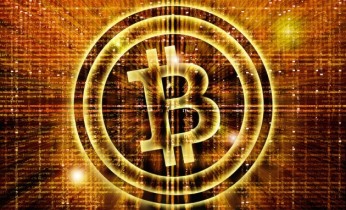
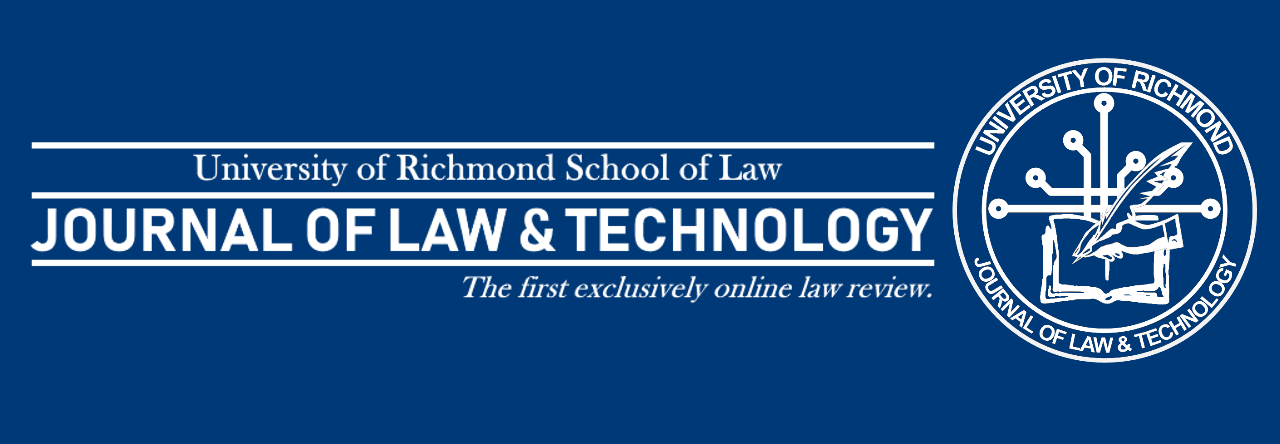
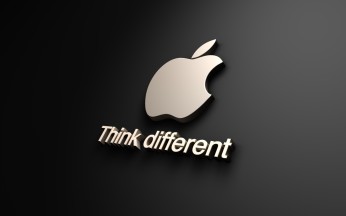 By: Biniam Tesfamariam,
By: Biniam Tesfamariam,